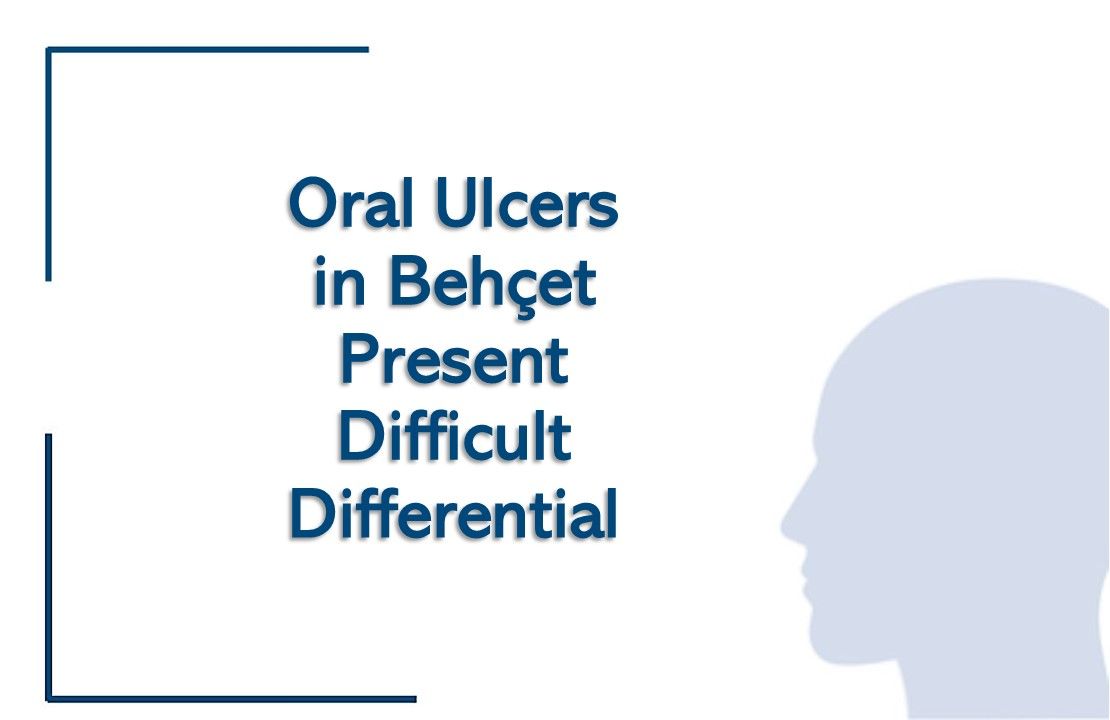© 2025 MJH Life Sciences™ , Patient Care Online – Primary Care News and Clinical Resources. All rights reserved.
Oral Ulcers in Behçet Present Difficult Differential
Diagnosis of Behçet disease can be complicated by overlapping clinical features, as described in these 8 brief summaries.
Without specific confirmatory tests, the diagnosis of Behçet disease (BD) is based on clinical criteria. The earliest manifestation and most important sign is oral ulcers.
Oral lesions are linked with various autoimmune and other disorders that may have overlapping clinical features, complicating the differential diagnosis.
Early, precise diagnosis of BD increases the effectiveness of treatment. Scroll through the slides below for brief summaries of oral presentations in various conditions.
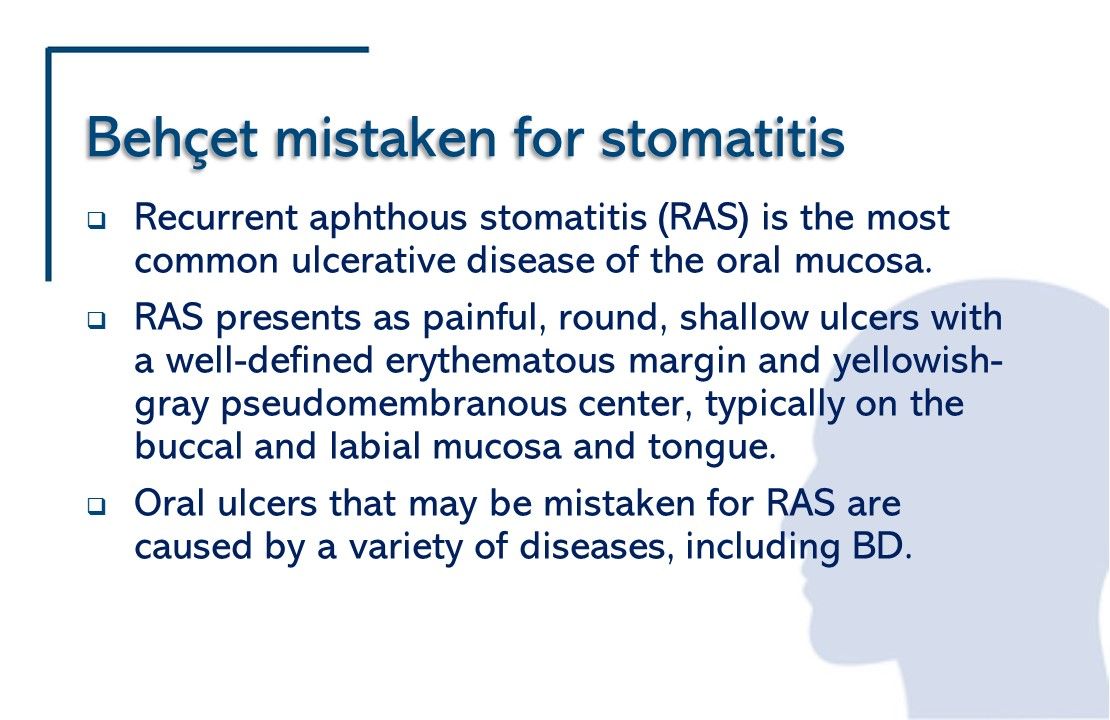
Behçet mistaken for stomatitis. The most common ulcerative disease of the oral mucosa, recurrent aphthous stomatitis (RAS), presents as painful, round, shallow ulcers with a well-defined erythematous margin and yellowish-gray pseudomembranous center. RAS typically is located on the buccal and labial mucosa and tongue. Diseases that cause oral ulcers that may be mistaken for RAS include cyclic neutropenia, recurring intraoral herpes infections, HIV, Crohn disease, ulcerative colitis—and BD. Dental Clinics of North America
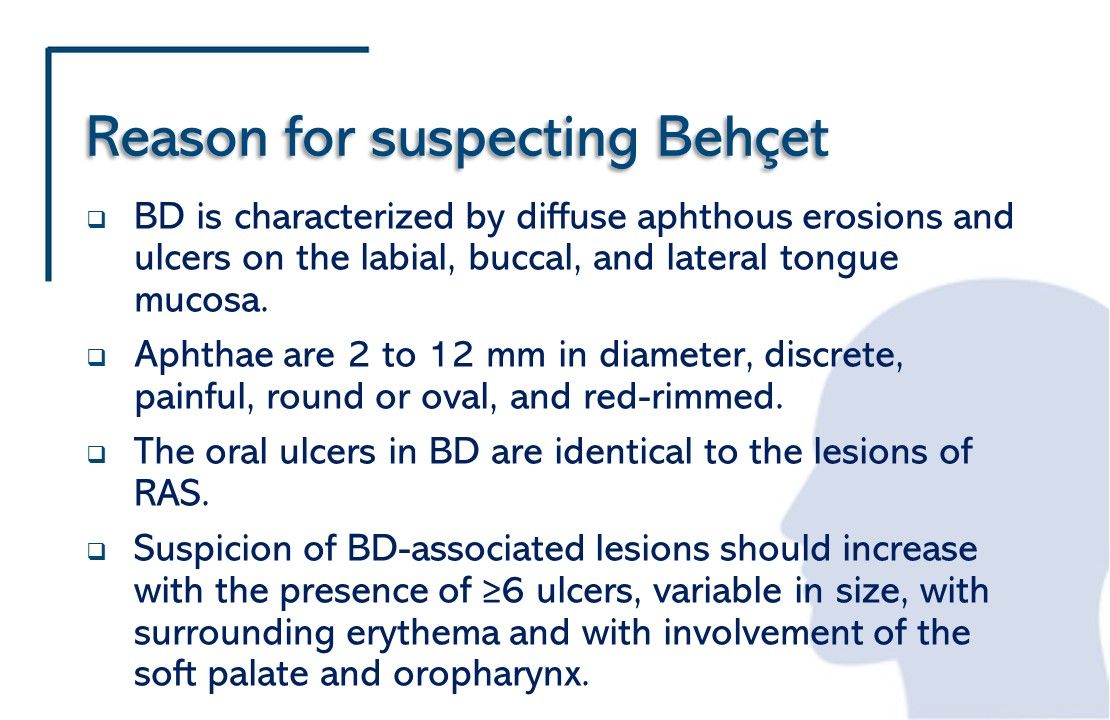
Reason for suspecting Behçet. BD is characterized by diffuse aphthous erosions and ulcers on the labial, buccal, and lateral tongue mucosa. Aphthae are 2 to 12 mm in diameter, discrete, painful, round or oval, and red-rimmed. The oral ulcers in BD are identical to the lesions of RAS, but suspicion of BD-associated lesions should increase with the presence of 6 or more ulcers, variable in size, with surrounding erythema and with involvement of the soft palate and oropharynx. American Behcet’s Disease Association
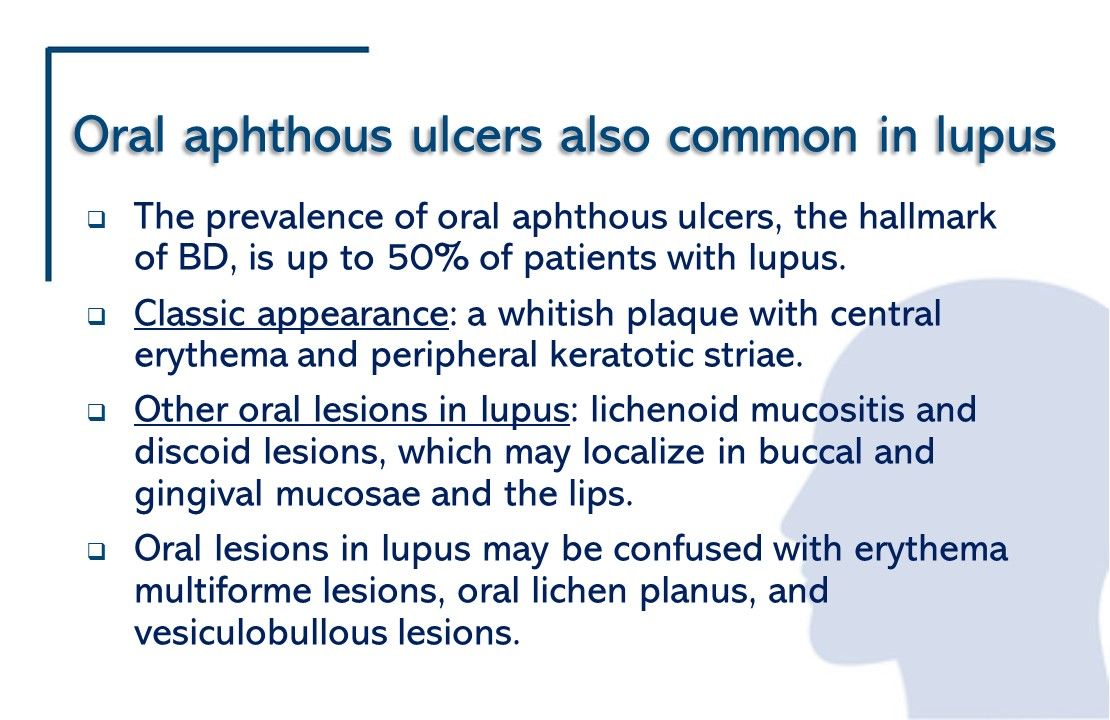
Oral aphthous ulcers also common in lupus. The prevalence of oral aphthous ulcers, the hallmark of BD, is up to 50% of patients with lupus.The classic appearance is that of a whitish plaque with central erythema and peripheral keratotic striae.Other oral lesions in lupus include lichenoid mucositis and discoid lesions, which may localize in buccal and gingival mucosae and the lips.Oral lesions in lupus may be confused with erythema multiforme lesions, oral lichen planus, and vesiculobullous lesions. Journal of Clinical Medicine
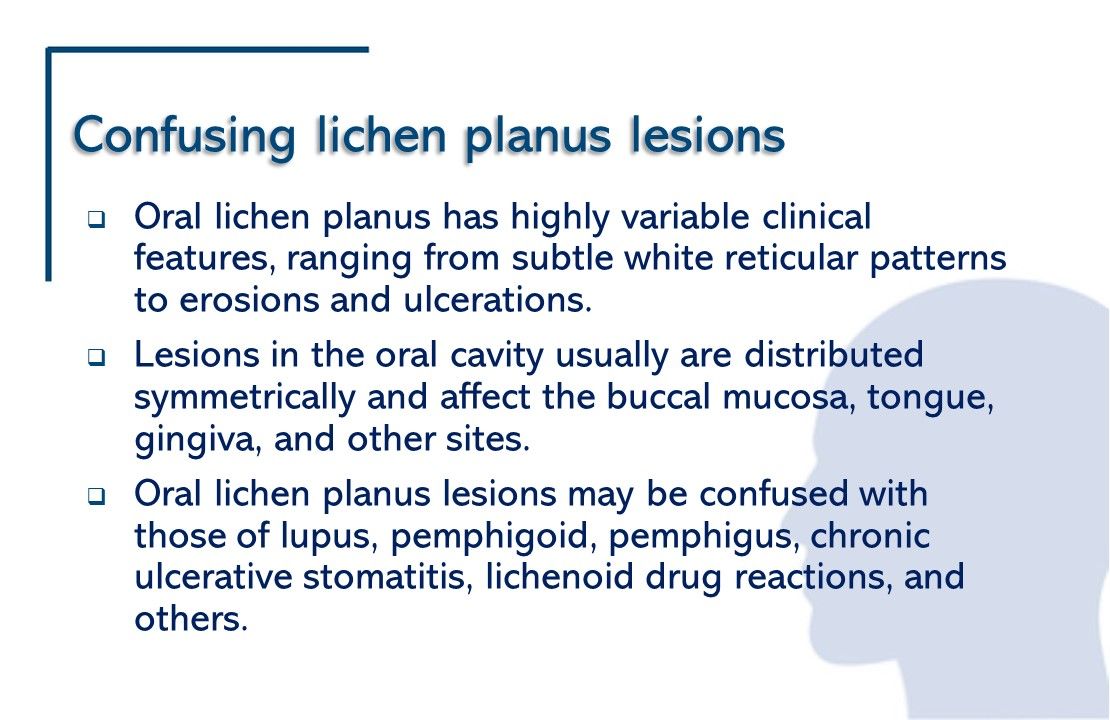
Confusing lichen planus lesions. The clinical features of oral lichen planus, a chronic immune-mediated disease, are highly variable, ranging from subtle white reticular patterns to erosions and ulcerations. Lesions in the oral cavity usually are distributed symmetrically, affecting the buccal mucosa, tongue, gingiva, and other sites. They may be confused with those of various conditions, including lupus, pemphigoid, pemphigus, chronic ulcerative stomatitis, and lichenoid drug reactions. American Journal of Clinical Dermatology

Oral pemphigoid. Autoimmune bullous diseases are characterized by autoantibody-mediated blistering of the mucous membranes. One group, pemphigoid diseases, feature subepithelial blistering. In MMP, oral lesions present in the gingiva, where desquamation appears as patches or widespread erythema. Patients present with tense serous or hemorrhagic bullae that easily rupture, leading to irregularly shaped erosions or ulcers with yellowish slough surrounded by an erythematous halo. The palatal mucosa, buccal mucosa, and tongue also may be affected. American Journal of Clinical Dermatology
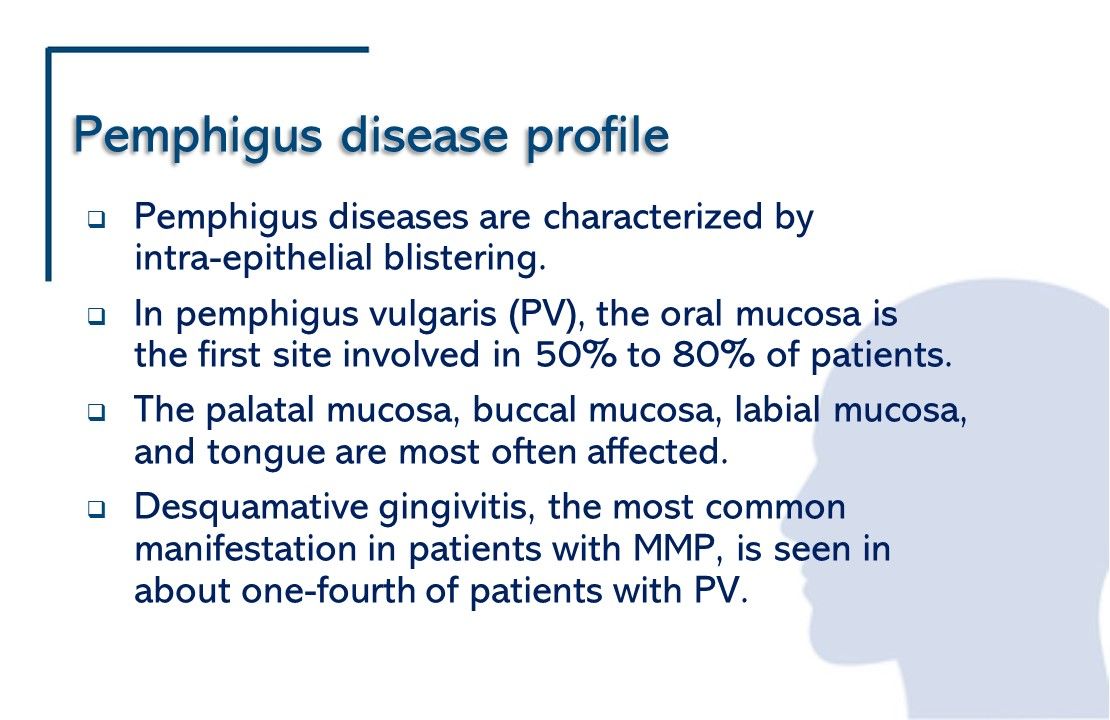
Pemphigus disease profile. A second group of autoimmune bullous diseases, pemphigus diseases, are characterized by intra-epithelial blistering.In the pemphigus vulgaris (PV) variant, the oral mucosa is the first site involved in 50% to 80% of patients. Erosions are displayed more often than intact blistering. Most often affected are the palatal mucosa, buccal mucosa, labial mucosa, and tongue. Desquamative gingivitis, the most common manifestation in patients with MMP, is seen in about one-fourth of patients with PV.American Journal of Clinical Dermatology
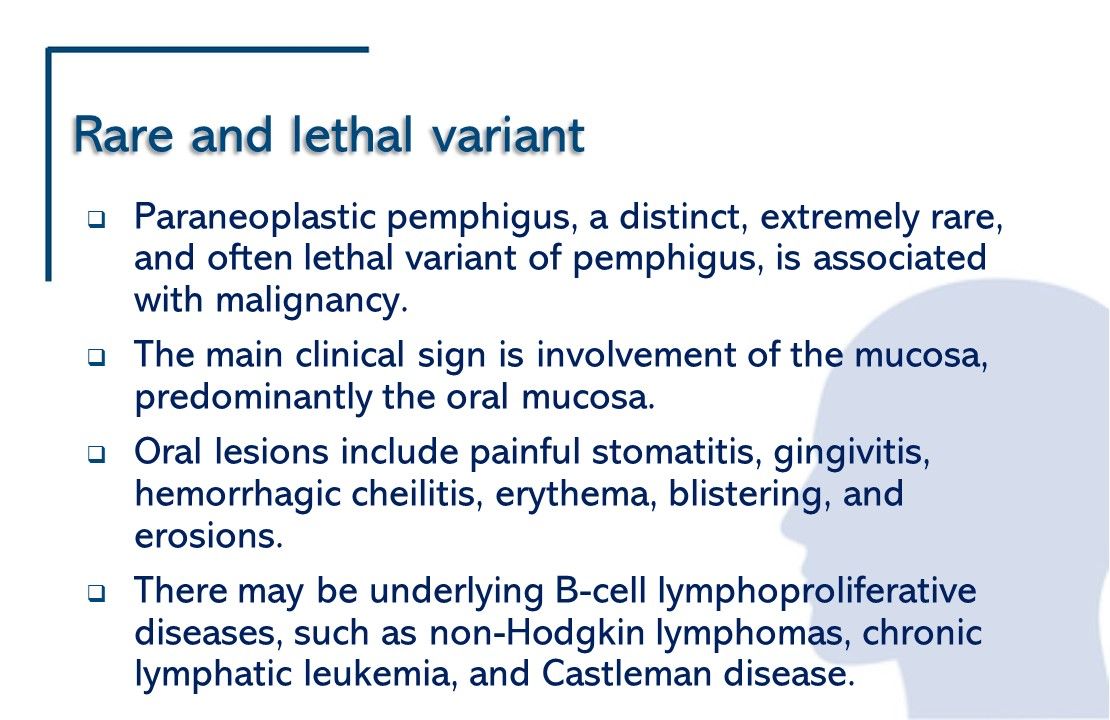
Rare and lethal variant. A distinct, extremely rare, and often lethal variant of pemphigus, paraneoplastic pemphigus, is associated with malignancy. Involvement of the mucosa, predominantly the oral mucosa, is the main clinical sign.Oral lesions include painful stomatitis, gingivitis, hemorrhagic cheilitis, erythema, blistering, and erosions.There may be underlying B-cell lymphoproliferative diseases, such as non-Hodgkin lymphomas, chronic lymphatic leukemia, and Castleman disease. American Journal of Clinical Dermatology
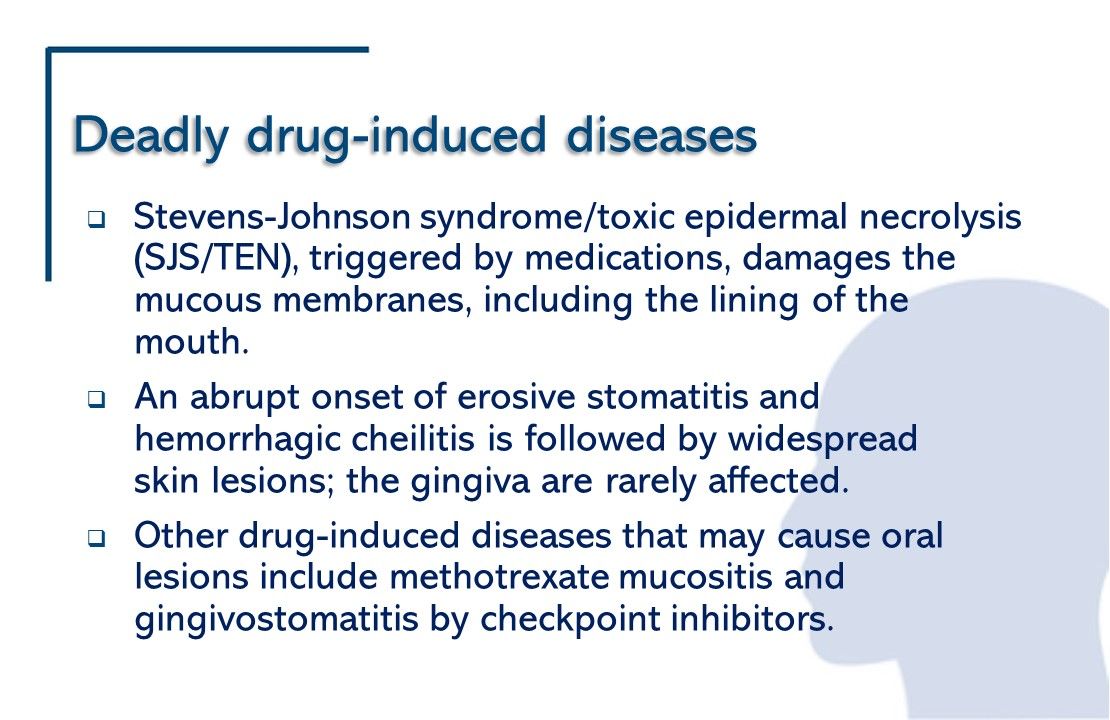
Deadly drug-induced diseases. Stevens-Johnson syndrome/toxic epidermal necrolysis (SJS/TEN), a severe skin reaction triggered by medications, also damages the mucous membranes, including the lining of the mouth. There is an abrupt onset of erosive stomatitis and hemorrhagic cheilitis, followed by widespread skin lesions. SJS/TEN rarely affects the gingiva. Other drug-induced diseases that may cause oral lesions include methotrexate mucositis and gingivostomatitis by checkpoint inhibitors. Genetics Home Reference

